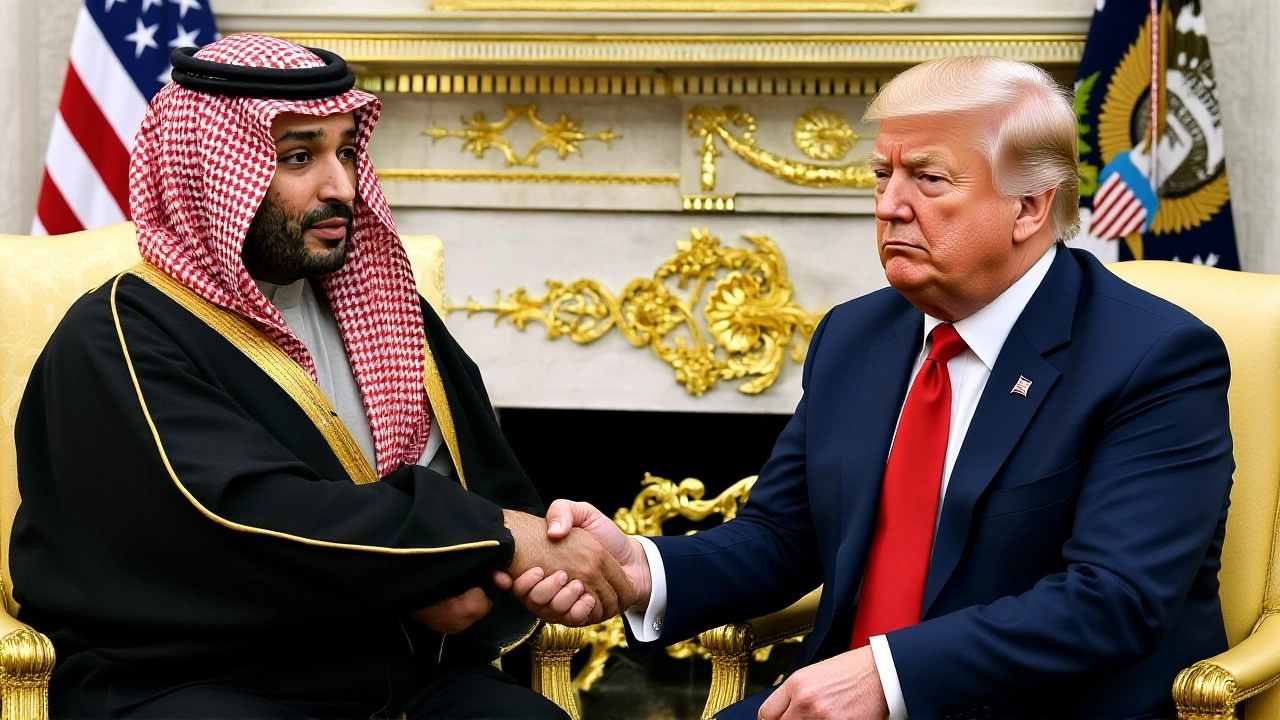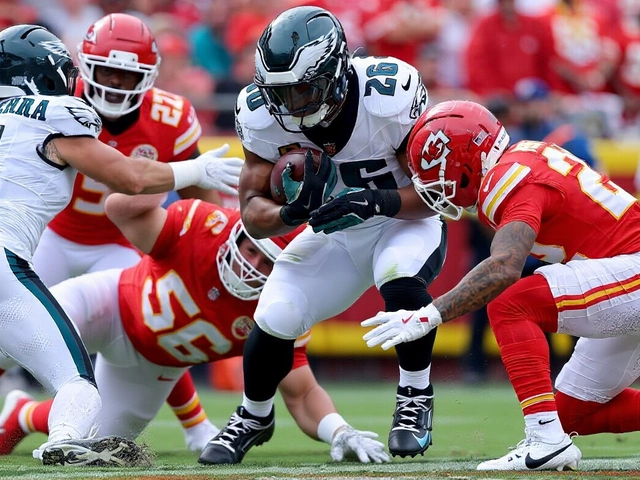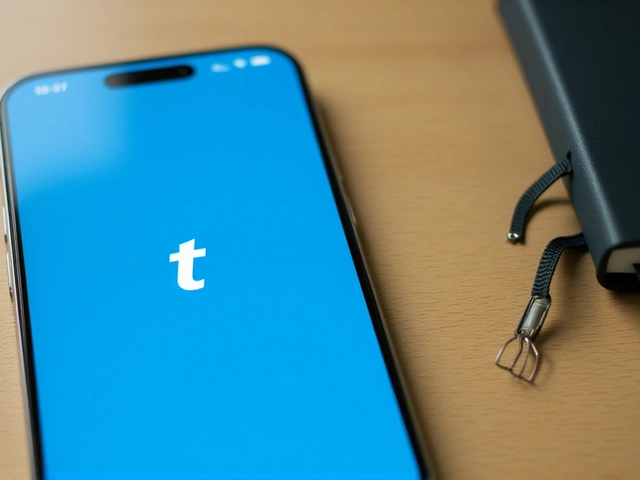On November 18, 2025, in the Oval Office of the White House, Donald J. Trump, the 79-year-old U.S. president, handed Crown Prince Mohammed bin Salman more than just a handshake—he handed him a geopolitical lifeline. In a surprise announcement, Trump formally designated the Kingdom of Saudi Arabia as a major non-NATO ally, a status that unlocks access to top-tier U.S. weapons systems, including the F-35 fighter jet. The move, confirmed by CBS News that same day, comes during the Crown Prince’s first official visit to Washington since 2018, and it’s tied to a staggering $1 trillion pledge of Saudi investment in American infrastructure, tech, and energy projects—an amount many analysts call aspirational at best.
A Pact Forged in Oil, Oil, and Oil
The U.S.-Saudi relationship has always been transactional. Since President Franklin D. Roosevelt met King Abdulaziz aboard the USS Quincy in 1945, the deal has been simple: oil for security. But this time, the calculus has shifted. With oil prices averaging $68.42 per barrel in 2025, Saudi Arabia’s budget deficit is widening. Vision 2030, the Crown Prince’s ambitious plan to wean the kingdom off oil, needs $600 billion in foreign direct investment—just to break even. The $1 trillion pledge, up from $600 billion promised during Trump’s May 2025 Riyadh trip, isn’t just a number. It’s a signal: Riyadh is desperate to lock in long-term U.S. economic backing before its reserves run thin.But here’s the twist: this isn’t about oil anymore. It’s about legitimacy. The Crown Prince wants Washington to treat Saudi Arabia not as a crude-dependent autocracy, but as a strategic partner with global influence. And Trump, ever the dealmaker, delivered—without demanding democracy reforms, human rights concessions, or even a public nod to Jamal Khashoggi’s murder. The message? Business first. Always.
The Gaza Factor: Why Normalization Is Off the Table
While the U.S. has spent years pushing Saudi Arabia to join the Abraham Accords, the Gaza war changed everything. Chatham House reported in late 2025 that Saudi Foreign Ministry officials internally concluded normalization with Israel is no longer viable—not without a credible path to Palestinian statehood. The kingdom now backs a two-state solution, not as a gesture, but as a precondition. In fact, Saudi Arabia is preparing to formally present its vision for Gaza’s reconstruction by December 31, 2025, including support for an international peacekeeping mission.“Since the outbreak of the Gaza war,” noted the Atlantic Council, “Saudi Arabia no longer views normalization with Israel as inevitable or cost-free.” That’s a seismic shift. For years, Washington assumed Riyadh would trade recognition of Israel for security guarantees. Now, it’s the reverse: security guarantees are being traded for a Palestinian future. And the Saudis are holding the cards.

Defense Deal: Red Lines and F-35s
The defense pact is the real prize. Under the new arrangement, any major attack on Saudi territory would be treated as a direct threat to U.S. national interests. That’s a game-changer. It means the U.S. could be drawn into regional conflicts—against Iran, Houthi rebels, or even non-state actors—on Saudi terms. In return, Saudi Arabia will receive F-35s, Patriot missile batteries, and advanced cyber-defense systems. Lockheed Martin, headquartered at 6801 Rockledge Drive, Bethesda, Maryland, stands to gain $10.1 billion per squadron in sales. The Pentagon is already drafting training protocols for Saudi pilots.But there’s a catch: Congress must approve the deal by January 31, 2026. And that’s where things get messy. Some Democrats, still stung by the Khashoggi killing and Yemen war involvement, are preparing to block the arms transfer. Republicans, flush with campaign donations from defense contractors, are lining up to support it. The outcome? A political firefight that could delay implementation for months.
Who’s Really Winning?
The Public Investment Fund of Saudi Arabia, managed by Yasir Al-Rumayyan, has quietly bought stakes in U.S. tech giants, sports teams, and defense manufacturers since 2015. Now, with $1 trillion pledged, it’s not just about buying assets—it’s about controlling narratives. Think: Saudi ownership of U.S. media outlets, AI startups, and even semiconductor supply chains. The The Nation called the deal “practically fictional,” comparing it to Mark Zuckerberg asking Trump what number he wanted to hear. But fiction or not, the perception matters. Markets react to signals, not spreadsheets.Meanwhile, the U.S. Department of State and the Saudi Ministry of Foreign Affairs are working in lockstep to position Riyadh as the architect of Gaza’s future. That’s a quiet revolution: a Gulf monarchy, not Washington, leading the diplomatic charge for Palestinian statehood. It’s a role the U.S. has long claimed for itself.

What Comes Next?
By the end of 2025, Saudi Arabia will unveil its Gaza reconstruction blueprint—likely involving a multilateral fund backed by the EU, Japan, and the UAE. The U.S. will contribute, but not lead. That’s the new normal. And by February 2026, Congress will either approve the defense pact or force Trump to negotiate a scaled-back version. Either way, the balance of power in the Middle East has shifted. The Saudis didn’t just get a new ally—they got a new role. They’re no longer just a client state. They’re a co-architect.Frequently Asked Questions
Why is Saudi Arabia’s $1 trillion investment pledge controversial?
Critics, including The Nation, argue the figure is politically inflated—akin to a billionaire asking for a round number. The actual committed capital may be far lower, with much of the pledge tied to future projects contingent on U.S. policy shifts. Still, the symbolic weight matters: it signals to global markets that Riyadh remains a top-tier investment destination despite oil volatility and internal economic strain under Vision 2030.
How does this affect U.S. relations with Israel?
Israel is concerned. The U.S. has long treated Saudi normalization as a capstone to the Abraham Accords. But Saudi Arabia now insists Palestinian statehood must come first. With Riyadh positioning itself as Gaza’s peace architect, Washington risks alienating its closest Middle East ally if it pushes too hard for normalization without progress on Palestinian rights. The diplomatic tension is real—and growing.
What role does the U.S. Congress play in this deal?
Congress must approve the transfer of F-35s and other defense systems under the Arms Export Control Act. While the executive branch can announce the alliance, weapons sales require legislative green lights. With Republican control of the Senate and House, approval is likely—but not guaranteed. Democrats may attach human rights conditions or delay votes until after the 2026 midterm elections.
Could this lead to a nuclear arms race in the region?
Saudi Arabia has signaled interest in civilian nuclear energy under Vision 2030, but it’s also hinted at seeking nuclear capabilities if Iran develops a bomb. The U.S. has promised to assist with peaceful nuclear technology, but any move toward enrichment would trigger international sanctions. Experts warn this deal could embolden Riyadh to accelerate its nuclear ambitions, especially if regional security guarantees feel unreliable.
How does this impact global oil markets?
Not directly—but indirectly, yes. The deal reduces Saudi Arabia’s need to cut oil production to prop up prices. With $1 trillion in U.S. investments, Riyadh can afford to maintain output levels even if prices dip below $70. That could pressure OPEC+ partners like Russia and the UAE, who rely more heavily on high oil revenues. Markets may see this as a sign that Saudi Arabia is less vulnerable to price swings than previously thought.
What’s the long-term implication for U.S. influence in the Middle East?
The U.S. is transitioning from being the dominant power broker to a junior partner in a Saudi-led order. Riyadh is now shaping the Gaza peace agenda, leading economic investment, and negotiating defense terms on its own terms. If this trend continues, Washington’s role could shrink to that of a supplier—of weapons, tech, and capital—rather than the architect of regional stability. That’s a profound change.





